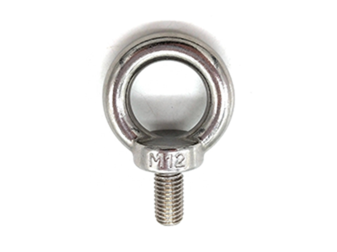Nov . 22, 2024 02:43 Back to list
m12 chemical anchor bolts
Understanding M12 Chemical Anchor Bolts An Essential Guide
Chemical anchor bolts, particularly the M12 size, are an integral component in construction and engineering applications. They are designed to provide strong, reliable anchoring in various materials, including concrete, brick, and masonry. This article delves into the characteristics, uses, advantages, and installation processes of M12 chemical anchor bolts.
What are Chemical Anchor Bolts?
Chemical anchor bolts are fasteners that utilize a two-part epoxy or adhesive system to create a robust bond between the anchor and the base material. Unlike mechanical anchors that rely on friction, chemical anchors create a bond through a chemical reaction between the adhesive and the substrate. The M12 designation refers to the diameter of the bolt, which measures 12 millimeters.
Characteristics of M12 Chemical Anchor Bolts
M12 chemical anchor bolts come with varying lengths and thread types. They are generally made from high-quality materials such as stainless steel or carbon steel, ensuring durability and resistance to corrosion. The chemical bonding process allows for load capacities that can exceed those of traditional mechanical anchors when properly installed.
Applications
M12 chemical anchor bolts are commonly used in a variety of applications, including
1. Structural Connections These bolts provide secure connections for steel structures and frameworks, where stability is paramount. 2. Heavy Equipment Installation M12 anchors are ideal for securing heavy machinery to concrete slabs, ensuring safety and operational efficiency. 3. Building Renovations When adding new elements to existing structures, these anchors offer a reliable means of securing new assemblies to old materials. 4. Facade and Cladding Installations M12 bolts are frequently used in attaching external facades and cladding systems to structural walls.
Advantages of M12 Chemical Anchor Bolts
1. High Load Capacity The chemical adhesion enables M12 anchor bolts to withstand significant shear and tensile loads, making them suitable for heavy-duty applications.
m12 chemical anchor bolts

3. Reduced Stress on Base Material Unlike mechanical anchors that expand and exert pressure on surrounding material, chemical anchors bond smoothly, minimizing the risk of cracking or damage.
4. Ease of Use Although proper installation techniques must be followed, chemical anchors are relatively straightforward to use, requiring minimal equipment beyond standard drilling tools.
Installation Process
Installing M12 chemical anchor bolts involves several steps to ensure efficacy and safety
1. Preparation Begin by selecting the appropriate location and preparing the site. Ensure the surface is clean, dry, and free of debris.
2. Drilling the Hole Use a hammer drill to create a hole of the specified diameter and depth, according to the manufacturer’s guidelines. A dust removal tool should be used to clear dust from the hole.
3. Injecting the Adhesive Depending on the epoxy system being used, inject the adhesive into the hole, following the instructions for application to ensure proper bonding.
4. Inserting the Bolt Immediately after injecting the adhesive, insert the M12 bolt into the hole, twisting slightly to ensure even distribution of the adhesive. Hold it in place until the adhesive begins to set.
5. Curing Time Allow the adhesive to cure for the recommended time before applying any loads or stress to the anchor.
Conclusion
M12 chemical anchor bolts are an efficient and reliable solution for a wide variety of anchoring needs in construction and engineering. Their load capacity, versatility, and ease of installation make them a preferred choice for professionals seeking strength and stability in their projects. Understanding the benefits and proper installation techniques of these anchor bolts can contribute significantly to the success and safety of construction endeavors.


